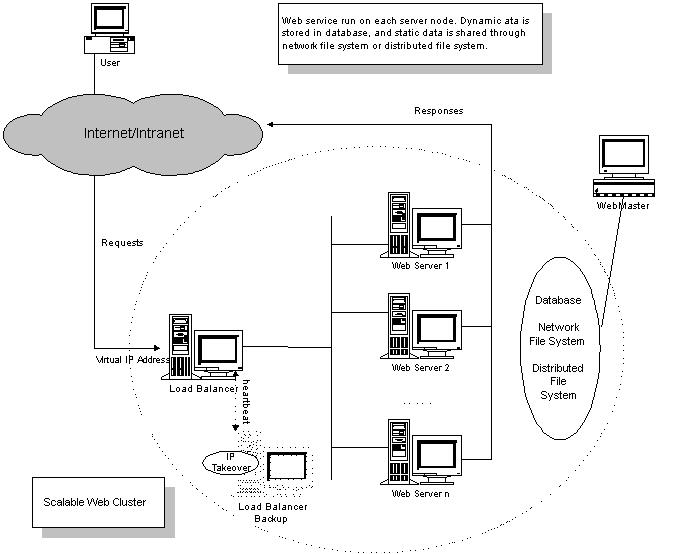Building Scalable Web Cluster using LVS
Introduction
Architecture
The general architecture of LVS-based web cluster is illustrated in the following figure.
The architecture has three ties:
- Load balancer, which usually use IP load balancing technologies for higher system throughput
- Web server pool, which actually perform HTTP and/or HTTPS services
- Shared storage, which can be database, network file system, distributed file system, or the hybrid ones.
For dynamic web pages (such as PHP, JSP and ASP pages), data that is accessed by dynamic pages usually is stored in database system. The database service is running at stand-alone server, and is shared by all the web servers. No matter if multiple dynamic pages from a web server or different web servers access the same data, database engines provide atomicity and locking facility to serialize data access, so that it is easier to guarantee data consistency.
The static files, such as HTML, graphics, and dynamic page scripts file, can be stored in network file system (NFS or CIFS) or distributed file system. Whether to choose network file system and distributed file system, it depends on system scale and the loading of file access. Through shared network file system and distributed file system, webmaster can see a single image of file storage space,
Configuration Example
if you want to install ipvsadm-1.24 for kernel 2.6 in red hat enterprise linux 4 ,you need to do ln -s /usr/src/kernels/2.6.9-5.EL-hugemem-i686/ /usr/src/linux
